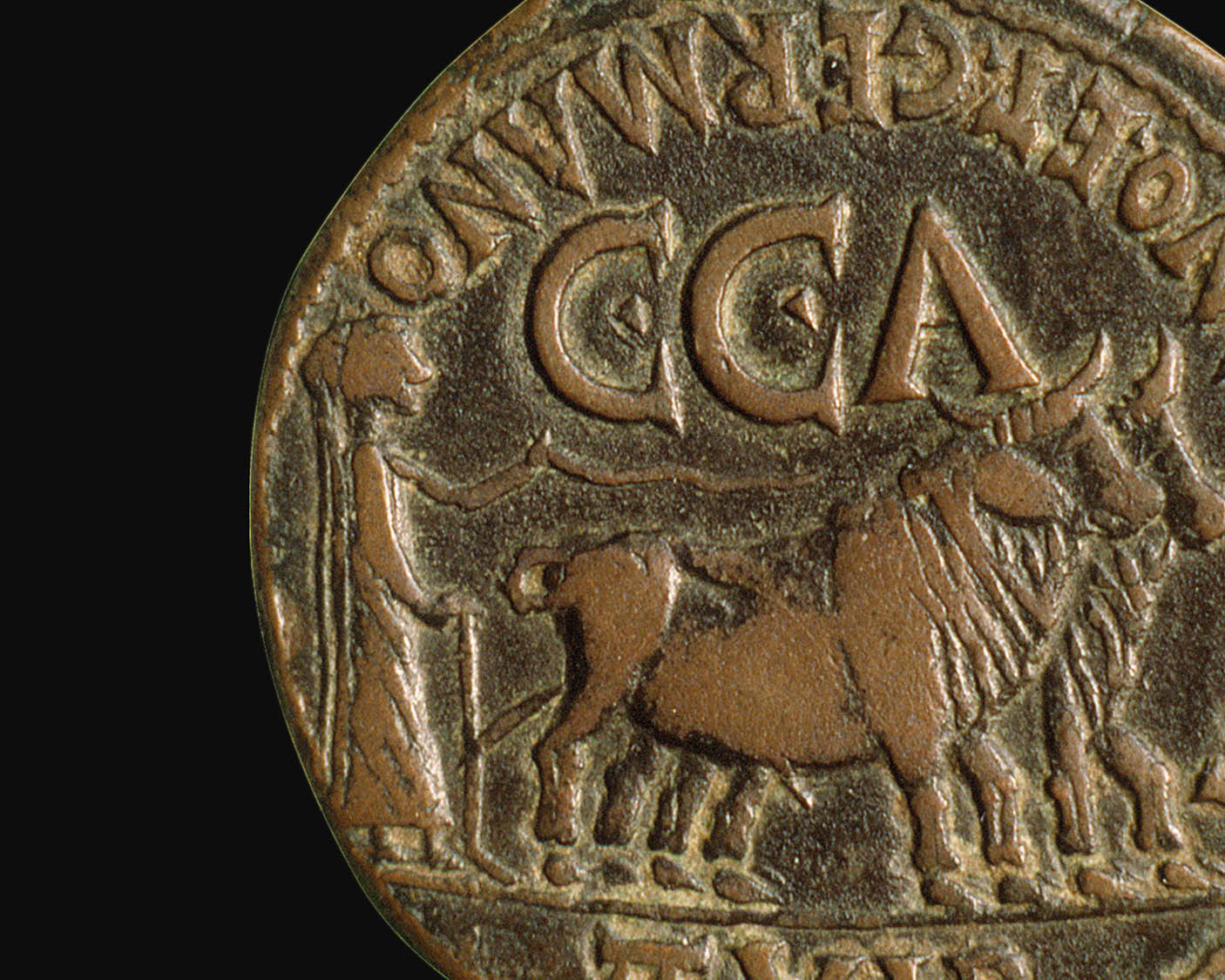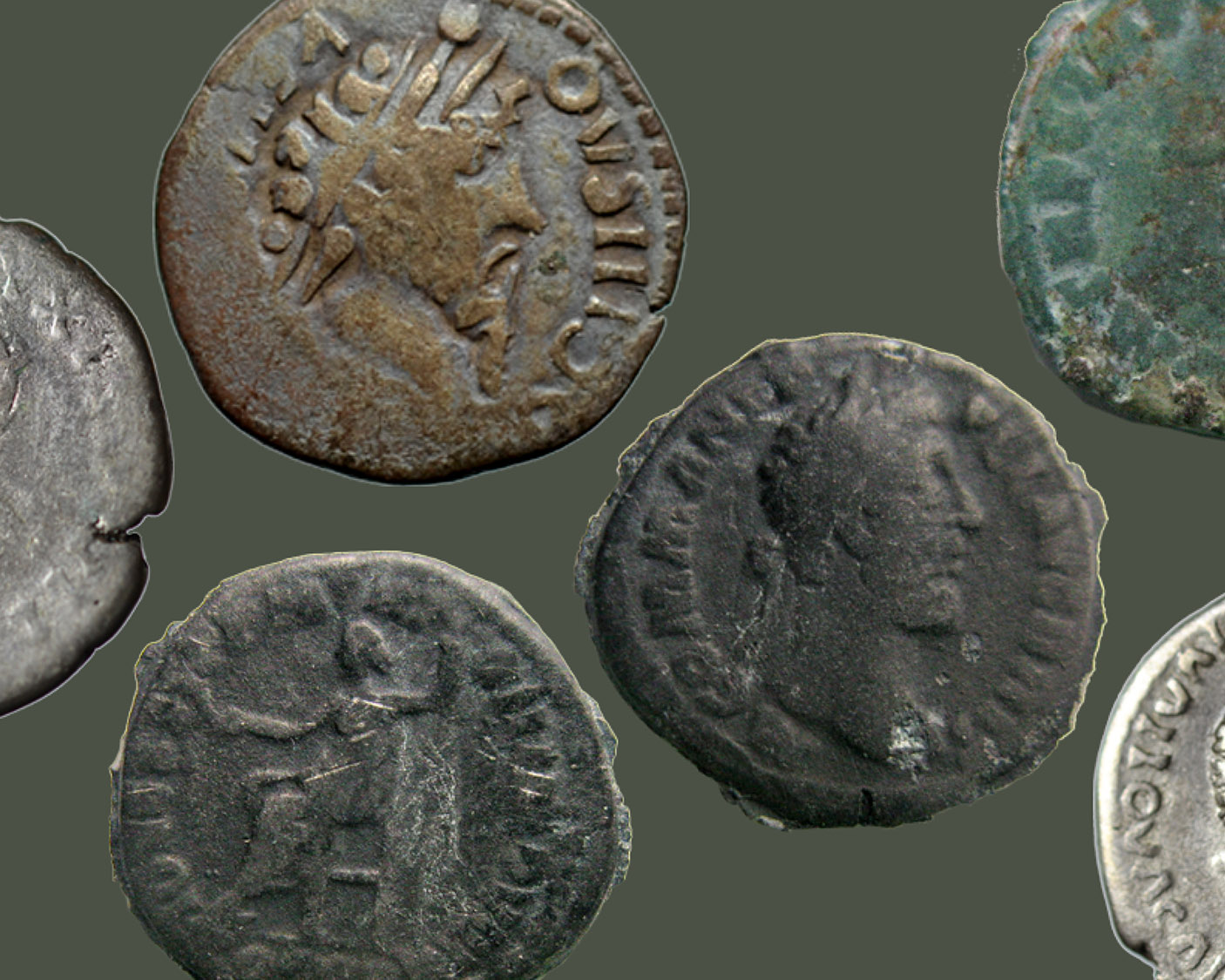Scattered Inflations
Italy
The lira was the official currency of Italy from its unification in 1861 until 2002, when it was physically replaced by the euro banknotes and coins. The term itself, like the English word pound or the French word livre, had previously designated a unit of weight. It was defined as 4.5 g of pure silver and 0.290322 g of pure gold, like the French franc. Italy joined the Latin Monetary Union in 1865.
20 lira, 1879. Gold, 6.44 g. Rome (ANS 1937.146.1887, bequest of Herbert Scoville).
1 lira, 1884. Silver, 4.97 g. Rome (ANS 1937.146.1885, bequest of Herbert Scoville).
Italy went through a monetary crisis similar to that of France and other European countries during the First World War and afterward, for very similar reasons, and the lira collapsed against the British pound and the US dollar. The United Kingdom had adopted the gold standard in 1816 with one ounce of gold being worth 4.24 British pounds, a ratio that Britain struggled to maintain until 1931. As such, a British pound originally purchased about 26 Italian lira. That rate reached 140-150 to the pound (and 30 to the dollar) in 1926. Then Mussolini opted for a deflation and brought the rate back to 90 to the pound. After the Second World War, the lira was pegged to the US dollar at a rate of 575 lira. Several episodes of serious inflation occurred after the breakdown of the Bretton Woods system in 1971. The dollar reached 2,050 lira in the wake of the restrictive monetary policy conducted by Paul Volcker, the then Federal Reserve Chairman. It was close to 1,700 when the lira was subsumed into the union of the euro on January 1, 1999, at a rate of 1,936.27 to the euro. Compared to France, where the franc was close to 5.67 to the dollar at the same date, most of the difference actually originates from the French 1958 reform that had notionally divided the franc by 100. Without this, the lira would have only lost 66% of its value against the franc over a period of 75 years, equivalent to an average annual compounded rate of about 0.5%. This shows that the French and Italian experiences with inflation did not fundamentally differ throughout the 20th century.
100 lira banknote, 1938 (ANS 1992.117.7783, gift of Arthur Mintz).
Italian banknotes were issued from 1896, the largest being a 1,000 lira denomination. Although notional values did not change until after the Second World War, the growing importance of the higher denominations in daily life was a sign of the inflation that had hit Italy since 1914.
1 lira banknote, 1943 (ANS 0000.999.51182).
The Allied forces landed in Sicily in July, 1943, and introduced a lira valued at 120 and then 100 to the dollar.
1 lira banknote issued by the Provisional Government, 1944 (ANS0000.999.51233).
500 lira banknote, 1967 (ANS 1992.117.7804, gift of Arthur Mintz).
A referendum led to the abdication of the last king, Umberto II, and the proclamation of a Republic on June 2, 1946. The lira was fixed at 575 and then 625 to the dollar, respectively, in November, 1947, and September, 1949. The highest denomination issued between 1945 and 1967 was a 10,000 lira banknote; then 100,000 lira banknotes appeared. The highest denomination ever was 500,000 lira, in 1997. These growing notional values testify to the progressive erosion that inflation caused to the purchasing power of the Italian currency until its integration into the euro system.
100,000 lira banknote, 1994 (ANS 2010.62.5, gift of Frank Colon).
Yugoslavia
The Socialist Federal Republic of Yugoslavia was formed, after 1918, in order to incorporate most of the Southern Slavic populations that had belonged to the former Austrian Empire. Technically, it looked like an extension of the small pre-1914 kingdom of Serbia, whose king ruled the new kingdom. It became a socialist republic after 1945, with a rotating presidency among its six member states. Inflation was a permanent concern, leading to five currency revaluations between 1966 and 1989. In 1990, a new dinar was set up at a value of 10,000 old dinar. The collapse of the Soviet-led Eastern Bloc, compounded by internal ethnic tensions and economic issues, led to excessive supply of paper money as the federal government tried to maintain its budgetary commitments. The western states left the Federation in 1991, and endemic wars plagued their regions until the Kosovo war that ended in 1999. Serbia and Montenegro remained united until 2006. They went through a period of hyperinflation between 1992 and 1994. The extent of the currency depreciation is partially concealed by the several revaluations in units of accounts that took place: 1 for 10,000 in 1990, 1 for 10 in 1992, 1 for 1,000,000 in 1993 and again in 1994, then 1 for 13,000,000 again in the same year. The cumulative depreciation impact on the currency between 1990 and 1994 finally reached 1.3 × 1027 in 1990 dinar terms!
All the following banknotes are a loan from Dr. Olivier Zak-Dit-Zbar, who spent most of 1993 in Bosnia and Serbia, providing medical assistance to the populations as part of the French units serving under the UNPROFOR peacekeeping force.
100 dinar banknote, 1992.
5,000 dinar banknote, 1993.
10,000 dinar banknote, 1993.
500,000 dinar banknote, 1993.
5,000,000 dinar banknote, 1993.
100,000,000 dinar banknote, 1993.
1,000,000,000 dinar banknote, 1993.
10,000,000,000 dinar banknote, 1993.
50,000,000,000 dinar banknote, 1993.
A 500 billion dinar banknote was issued in the same year, the largest ever for Yugoslavia.
Other Examples
Zimbabwe. 100,000,000,000,000 dollar banknote, 2008 (ANS 2012.10.1, gift of Frederic G. Withington).
High inflation in Zimbabwe started in 2004, as the state had its central bank printing more and more money to provide resources for its strapped budget. Inflation reached 624% that year. The situation exponentially worsened and peaked in November, 2008, at a monthly rate of 79.4 billion percent, or 98% on a daily rate. The Zimbabwean local dollar was dropped in April, 2009, in favor of using foreign currencies, mainly the US dollar—a paradoxical achievement. The peculiarity of the 100 trillion dollar banknote is the full display of all the zeros, something Hungary and Germany avoided, but which recalls the Yugoslavian practice.
Georgia. 5,000,000 rouble, banknote 1923 (ANS 1943.147.95).
As the Russian Empire disintegrated in 1918, several breakaway Republics and various entities enjoyed some degree of independence, until the Bolsheviks managed to reintegrate most of the former Empire between 1919 and 1924. Although inflation did not quite reach some of the peaks recorded elsewhere, this particular banknote deserves attention as a beautiful object of multi-lingualism. Some banknotes from the period tried to incorporate most of the languages spoken by the different populations of the Empire, as a show of respect for the different populations whose rights were officially upheld by the Soviet Constitution of 1924, even if the later practice would be very different.
16 modern banknotes illustrating Inflation.
This miscellaneous assemblage of inflationary objects enjoys one peculiar characteristic: these 16 banknotes, from eight different countries, spanning most of the 20th century, were purchased for 32 euro in September, 2011, at the Paris Flea Market (Marché aux Puces). The consolidated notional values of all these banknotes combined reach about 9 million units, or rather, 1.001 billion if the over-printed 1,000-reichsmark banknote converted into 1 billion mark is taken into account. The banknote from Zaire follows a monetary reform where 1 new zaire replaced 3,000,000 old zaires. The Chinese notes, although not inflationary, display one of the ways governments can fight inflation: by restricting the convertibility of their currency. This assemblage is a reflection on the value of paper money through time and geography, as each of these banknotes could be purchased for an average of 2 euro. This shows that even today, building a numismatic collection with meaning can still be a very affordable exercise! (Loan of Gilles Bransbourg).




